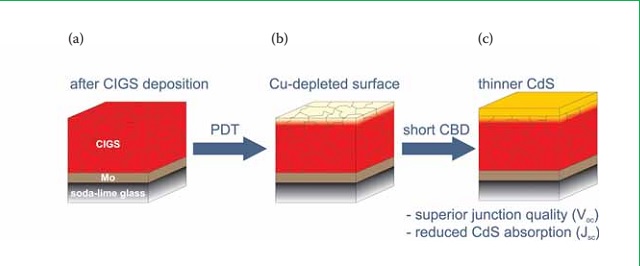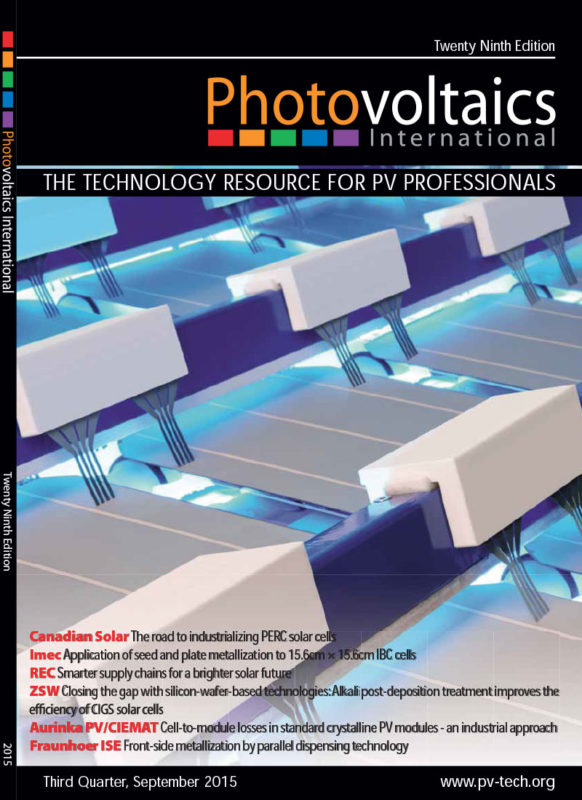By Oliver Kiowski, Centre for Solar Energy and Hydrogen Research Baden-Württemberg (ZSW), Stuttgart, Germany; Theresa M. Friedlmeier, Centre for Solar Energy and Hydrogen Research Baden-Württemberg (ZSW), Stuttgart, Germany; Roland Würz, Centre for Solar Energy and Hydrogen Research Baden-Württemberg (ZSW), Stuttgart, Germany; Philip Jackson, Centre for Solar Energy and Hydrogen Research Baden-Württemberg (ZSW), Stuttgart, Germany; Dimitrios Hariskos, Centre for Solar Energy and Hydrogen Research Baden-Württemberg (ZSW), Stuttgart, Germany
With the introduction of the alkali post-deposition treatment (PDT) for the absorber layer in Cu(In,Ga)Se2 (CIGS)-based solar cells, new efficiency records approaching 22% have become feasible. After gallium incorporation, sodium doping and the three-stage process, this is the next milestone on the CIGS roadmap. In this paper the current understanding of how PDT alters the CIGS surface and affects device parameters is illustrated. A comparative study of cell device parameters from ZSW and the evolution of efficiencies from other institutes and companies with and without PDT is presented.



